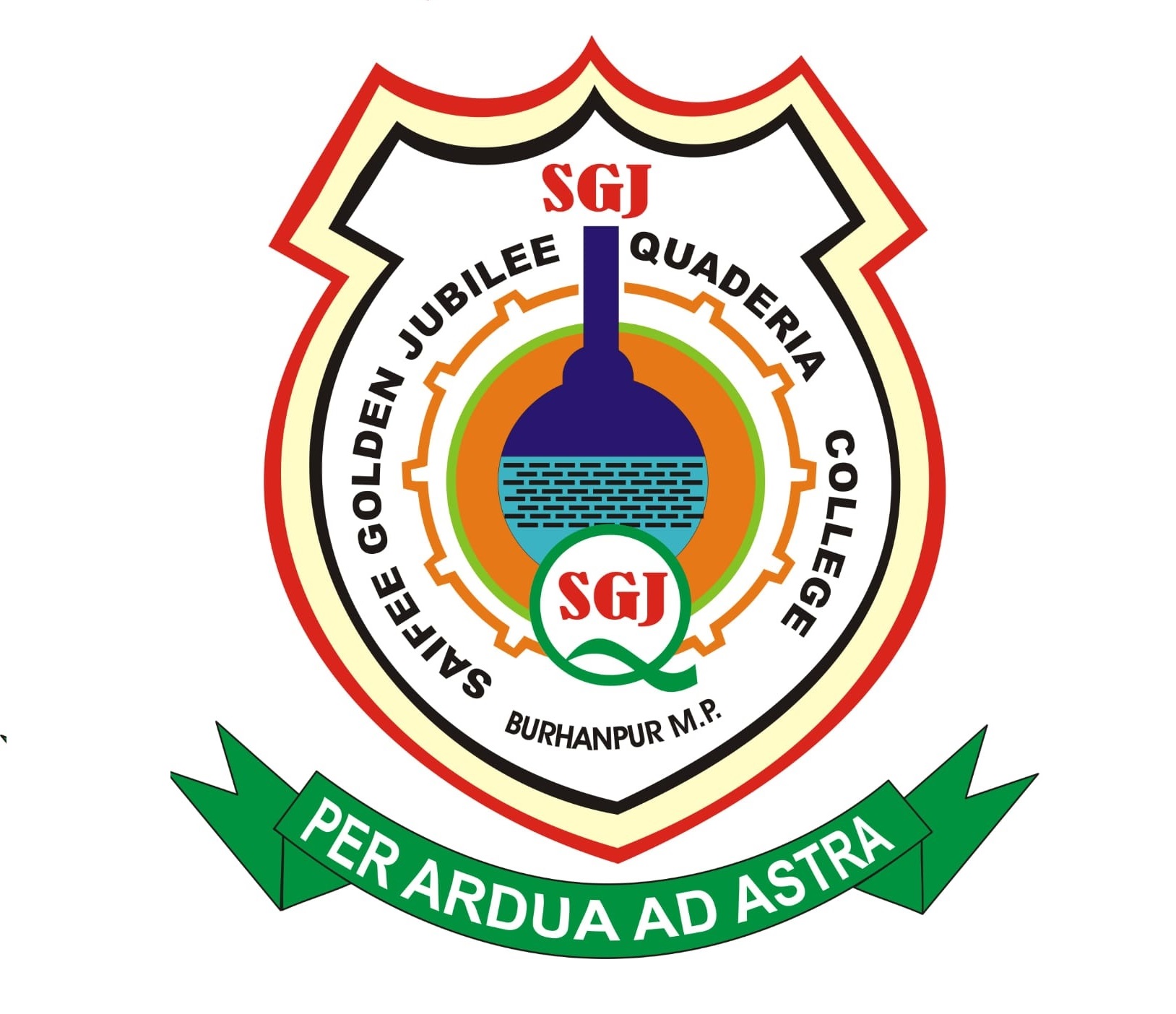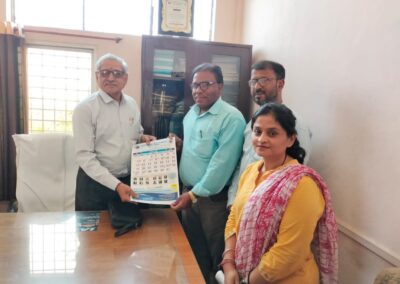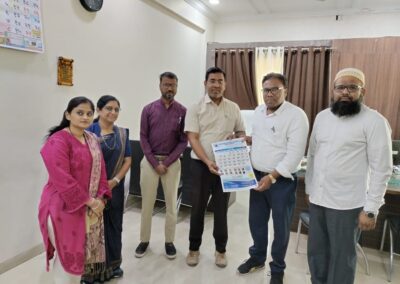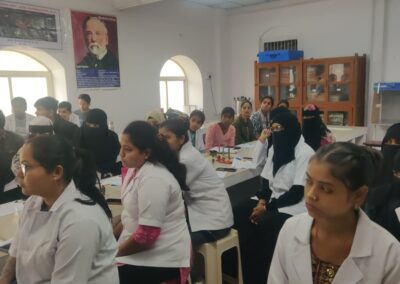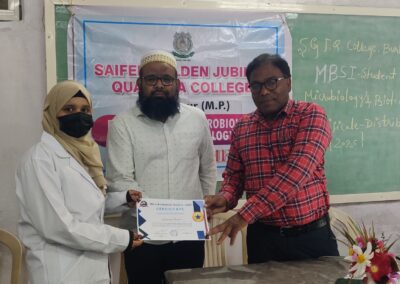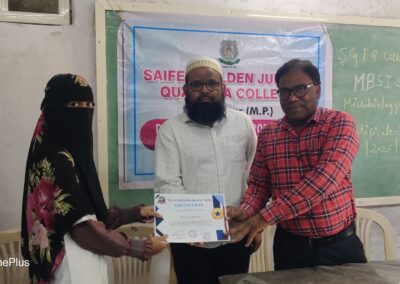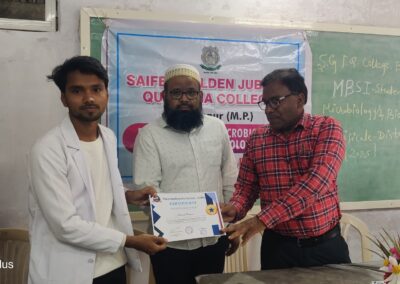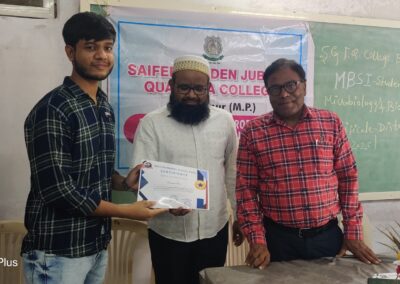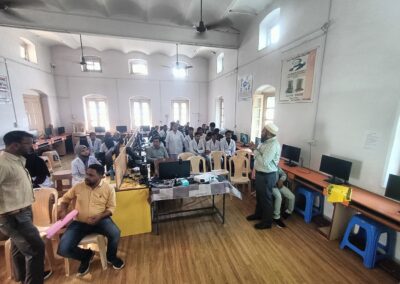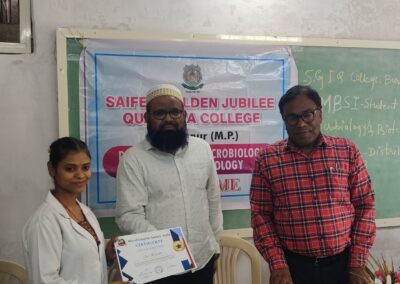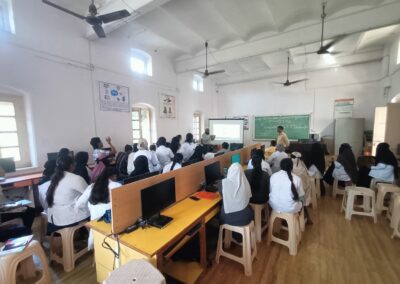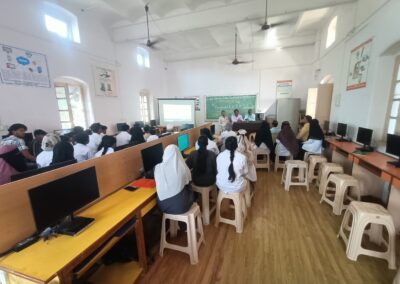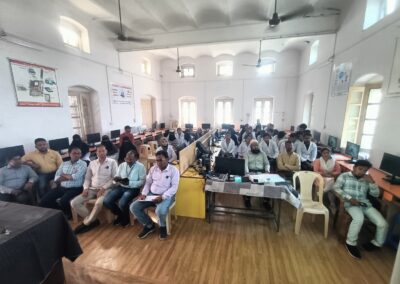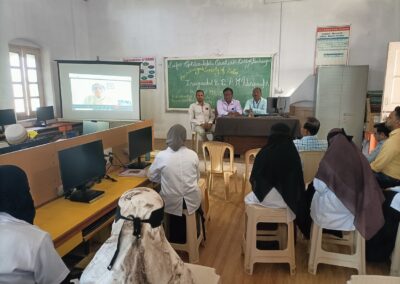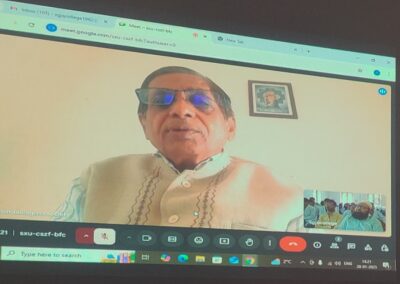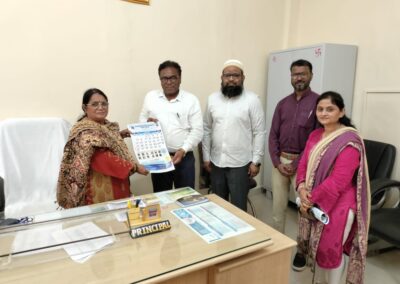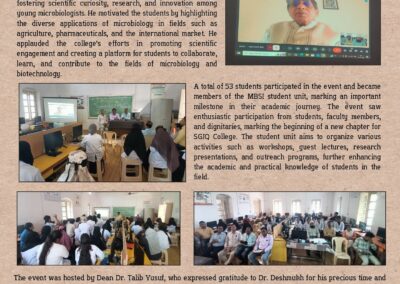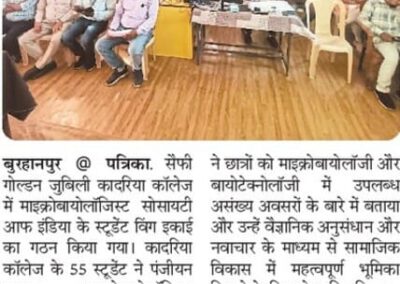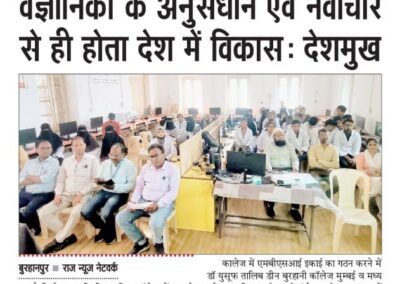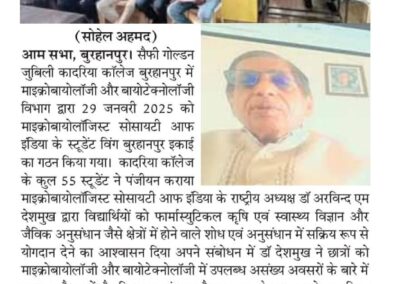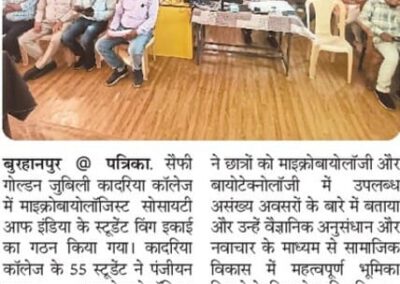Introduction:
On January 28, 2025, Saifee Golden Jubilee Quaderia College witnessed the inauguration of the Microbiologist Society of India (MBSI) Unit, a significant milestone in promoting microbiology and biotechnology education and research. This initiative, driven by the college’s microbiology and biotechnology departments, aims to foster a community of students and faculty interested in exploring the intricacies of microorganisms and their applications in biotechnology. With an overwhelming response, 55 students registered for the unit, demonstrating their enthusiasm for delving into the fascinating world of microbiology and biotechnology.
Objective:
The objective of the MBSI Unit at Saifee Golden Jubilee Quaderia College is to:
- Foster a vibrant community of students, faculty, and industry professionals in microbiology and biotechnology.
- Promote education, research, and innovation in a respective field through workshops, seminars, and conferences.
- Provide a platform for students to develop their skills, knowledge and preparing them for careers in academia, industry, and research.
- Encourage collaboration and networking among students, faculty, and industry
professionals. - Develop and implement outreach programs to promote awareness and understanding of microbiology and biotechnology among the general public.
Inauguration of MBSI Unit:
We are honoured to announce that the MBSI Unit at Saifee Golden Jubilee Quaderia College was inaugurated by Dr. A. M. Deshmukh, President of Microbiologist Society of India (MBSI) on January 28, 2025.
Dr. Deshmukh’s presence and guidance marked the beginning of a new chapter in promoting microbiology and biotechnology education and research at our college.
Appreciation Note:
We extend our heartfelt gratitude to Dr. Talib Yusuf, Dean of Burhani College, Mumbai, for his pivotal role in establishing the MBSI Unit at Saifee Golden Jubilee Quaderia College. Your vision, guidance, and support have been instrumental in making this initiative a success. We
appreciate your efforts in promoting our wings in education and research. Thank you for your leadership and commitment to excellence.
Acknowledgement:
We acknowledge the significant role played by Principal Mohammad Ismail Bafati in the establishment of the MBSI Unit at our College. Your support and guidance have been crucial in shaping this initiative. We are grateful for your leadership and commitment to promoting excellence in education.
MBSI Unit Promotion and Collaboration Event:
We successfully promoted the MBSI Unit and fostered collaboration with neighbouring institutions through a series of visits to Govt. College, Nepanagar, Dr. Zakir Husain College, Burhanpur and BIMTS College Jhiri on February 5-6, 2025.
We extend our gratitude to Dr. Talib Yusuf, Principal Mohammad Ismail Bafati, and faculty members for their active participation and support in making this event a success.
This initiative has strengthened our ties with neighbouring institutions and paved the way for future collaborations in promoting microbiology and biotechnology education and research.
MBSI Unit Certificate Distribution Event:
We proudly hosted the MBSI Unit Certificate Distribution Event on February 8, 2025, where 55 students were awarded certificates for their outstanding achievements.
We are thankful to Dr. Talib Yusuf and Principal Mohammad Ismail Bafati for graciously distributing the certificates and encouraging our students.
The event was attended by our esteemed teaching staff, who have played a vital role in students’ success.
This milestone marks a significant achievement for our students and reinforces our commitment to promoting excellence in microbiology and biotechnology education.
Appreciation Note:
We are grateful and thankful to Prof. Ritu Malvi and Prof. Azharuddin for their exceptional leadership and appreciate their management skills in organizing the MBSI Unit’s integration, calendar distribution, and certificate distribution events. Their tireless efforts, meticulous planning, and dedication ensured the seamless execution of these events, showcasing the MBSI Unit’s commitment to excellence. We are grateful for their invaluable contributions to the unit’s success.
Outcomes and Benefits:
1. MBSI Unit Integration: This program marked the inception of the MBSI Unit, promoting education and research in microbiology and biotechnology.
2. Calendar Distribution: The program enabled the distribution of the MBSI Unit’s calendar to neighbouring institutions, enhancing the unit’s visibility and potential for collaboration.
3. Certificate Distribution: The program recognized the achievements of 55 students by awarding them certificates, motivating them to advance in their careers. Collectively, these programs enhanced the MBSI Unit’s reputation and credibility, promoting education and
research in the respective field.
Conclusion:
This whole process of MBSI Unit’s integration, calendar distribution, and certificate distribution programs marked a significant milestone in promotion of microbiology and biotechnology.
Through these initiatives, we successfully fostered collaboration with neighbouring
institutions, recognized students’ achievements, and reinforced our commitment to academic
excellence.
We express our sincere gratitude to Dr. Talib Yusuf, Principal Mohammad Ismail Bafati, Prof. Ritu Malvi, Prof. Azharuddin, and all stakeholders for their invaluable support and contributions.
These programs have paved the way for future collaborations, research opportunities, and academic achievements, ultimately strengthening the MBSI Unit’s position as a hub for microbiology and biotechnology education and research.
